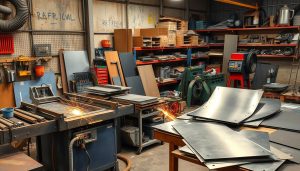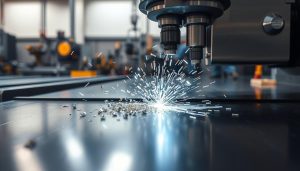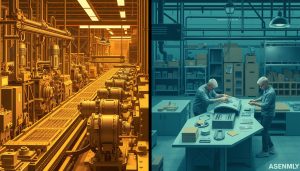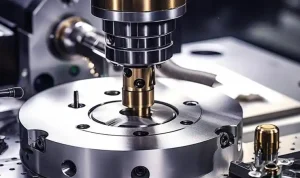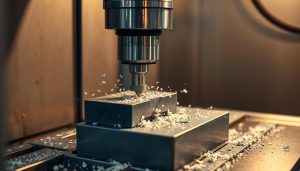Ever wondered about the metal world and its secrets? Knowing the difference between ferrous and non-ferrous metals can change the game. This guide will explore their unique properties and uses. It’s perfect for professionals in manufacturing or construction.
What Are Ferrous Metals?
Ferrous metals are metals that mainly have iron in them. They are known for their high iron content and magnetic properties. This makes them key in many industries.
These metals are strong, durable, and resist wear and tear well. They are often used in construction and for heavy machinery.
Properties and Characteristics
Ferrous metals have unique properties. They are strong, hard, and resist corrosion well. They can also be shaped easily into different forms.
Moreover, ferrous metals have excellent magnetic properties. This is important in many industrial uses.
Common Examples: Steel, Cast Iron, and Wrought Iron
- Steel is widely used for its strength, ductility, and versatility. It’s used in construction, transportation, and manufacturing.
- Cast iron has a lot of carbon and is strong under pressure. It’s used in machinery, cars, and decorations.
- Wrought iron is pure and has low carbon. It’s malleable and used in decorations and buildings.
| Ferrous Metal | Iron Content | Magnetic Properties | Typical Applications |
|---|---|---|---|
| Steel | 86-99% | Highly Magnetic | Construction, Automotive, Manufacturing |
| Cast Iron | 92-96% | Moderately Magnetic | Machinery, Automotive Parts, Decorative Elements |
| Wrought Iron | 99.5% | Weakly Magnetic | Decorative, Architectural |
Ferrous metals are crucial in many industries. They offer strength, durability, and corrosion resistance. These metals are vital in modern engineering and construction.
“Ferrous metals are the backbone of modern industry, providing the strength, reliability, and versatility that drive innovation and progress.”
What Are Non-Ferrous Metals?
Non-ferrous metals are a group of metals without iron. They have special properties that make them very useful. These include being corrosion resistant, lightweight, and having great electrical conductivity. This makes them key in engineering and technology today.
Properties and Characteristics
These metals don’t have iron, which gives them big advantages. They resist corrosion better than iron metals. This is why they’re great for places where the environment is tough.
Also, metals like aluminum and titanium are much lighter than steel. This is why they’re often used in the aerospace field where weight matters a lot.
Another important trait is their electrical conductivity. For example, copper is a top conductor of electricity. It’s used a lot in electrical wiring and electronic components. This, along with their resistance to corrosion, makes them crucial in electronics and telecommunications.
Common Examples: Aluminum, Copper, and Titanium
Some top non-ferrous metals are aluminum, copper, and titanium. Aluminum is light, resistant to corrosion, and conducts heat and electricity well. It’s used in many areas, from transportation to packaging.
Copper is known for its excellent electrical and thermal conductivity. It’s used a lot in electrical wiring, plumbing, and electronics. Titanium is strong, light, and resistant to corrosion. It’s used in aerospace, medical, and sporting goods fields.
| Non-Ferrous Metal | Key Properties | Primary Applications |
|---|---|---|
| Aluminum | Lightweight, Corrosion Resistant, Excellent Electrical and Thermal Conductivity | Transportation, Packaging, Construction |
| Copper | Superior Electrical and Thermal Conductivity | Electrical Wiring, Plumbing, Electronics |
| Titanium | High Strength-to-Weight Ratio, Corrosion Resistant | Aerospace, Medical, Sporting Goods |
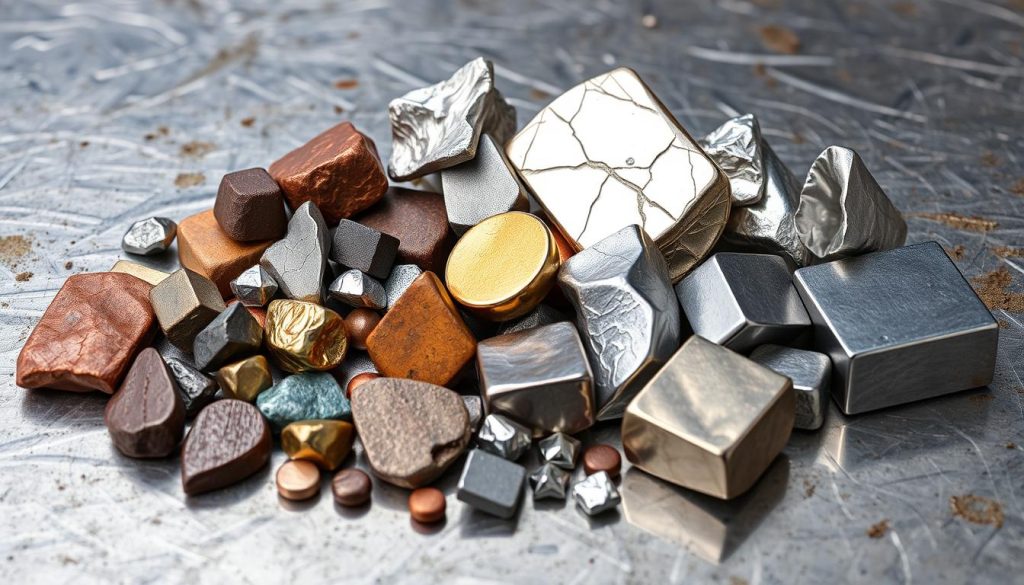
“Non-ferrous metals are the backbone of modern technology, enabling advancements in everything from renewable energy to medical implants.”
Key Differences Between Ferrous and Non-Ferrous Metals
Ferrous and non-ferrous metals have unique properties. They are suited for different uses. Knowing the differences helps in making the right choices in various fields.
Composition: Presence of Iron
Ferrous metals have iron as a main part. Non-ferrous metals do not. This iron difference affects their qualities and how they perform.
Strength and Durability Comparison
Ferrous metals, like steel and cast iron, are very strong and last long. Iron makes them tough for heavy loads and stress. Non-ferrous metals, like aluminum and copper, are strong but not as durable as ferrous ones.
Corrosion Resistance and Conductivity
Ferrous and non-ferrous metals differ in fighting corrosion and conducting electricity. Non-ferrous metals, like copper and titanium, resist corrosion better. They are also better at conducting electricity, making them great for electronics.
| Comparison Criteria | Ferrous Metals | Non-Ferrous Metals |
|---|---|---|
| Composition | Iron-based | Non-iron-based |
| Strength and Durability | Highly strong and durable | Strong, but less durable than ferrous metals |
| Corrosion Resistance | Relatively less resistant to corrosion | Generally more resistant to corrosion |
| Conductivity | Lower electrical and thermal conductivity | Higher electrical and thermal conductivity |
Understanding these differences helps professionals choose the right metal for their needs. This is important in construction, electronics, and more.
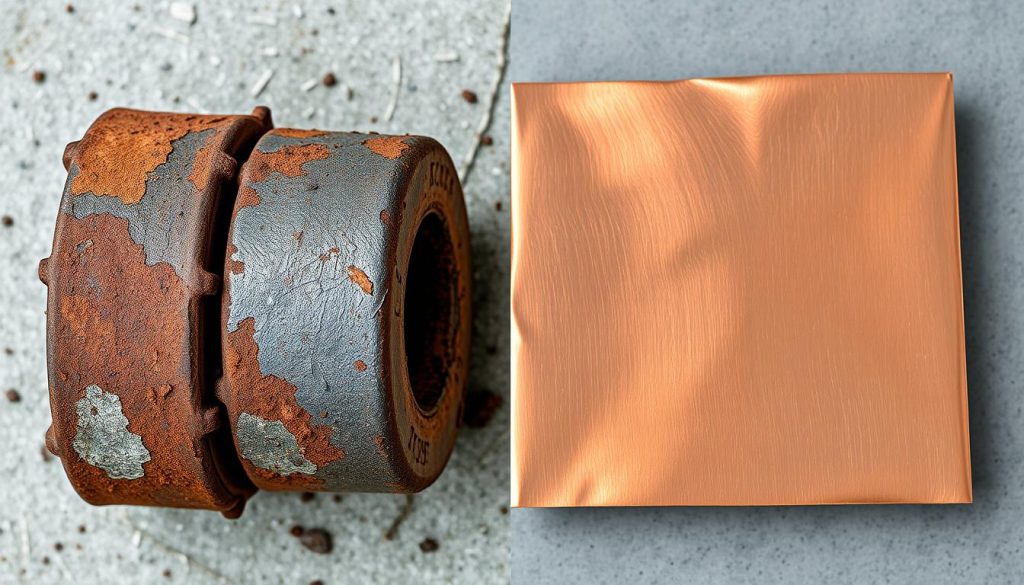
Applications of Ferrous and Non-Ferrous Metals
Ferrous and non-ferrous metals are very versatile. They are key in many areas, from building strong structures to making advanced electronics.
Ferrous Metals in Construction and Heavy Machinery
Ferrous metals like steel and cast iron are vital in construction. They are strong and last long, perfect for building frames and bridges. They also power heavy machinery, like construction tools and vehicles.
Non-Ferrous Metals in Aerospace and Electronics
Non-ferrous metals, like aluminum and copper, are mainly used in aerospace and electronics. They are light and conduct electricity well, making them great for planes and gadgets. These metals help make electronics work better and last longer.
| Application | Ferrous Metals | Non-Ferrous Metals |
|---|---|---|
| Construction | Steel, Cast Iron | Aluminum |
| Heavy Machinery | Steel, Wrought Iron | – |
| Aerospace | – | Aluminum, Titanium |
| Electronics | – | Copper, Aluminum |
Ferrous and non-ferrous metals are crucial in many fields. They help build strong buildings and create new technologies. As we need more of these materials, their importance will keep growing.
Shixinproto’s Metal Machining Services
At Shixinproto, we’re proud to offer top-notch metal machining services. We serve many industries with our expertise. Our team works with both ferrous and non-ferrous metals, creating custom solutions just for you.
Expert Solutions for Ferrous and Non-Ferrous Metal Projects
Need precision machining for steel, cast iron, or wrought iron? Or perhaps parts from aluminum, copper, or titanium? Shixinproto can handle it all. Our advanced tools and skilled team ensure every project is done right.
Why Choose Shixinproto for Your Precision Machining Needs
At Shixinproto, we’re all about quality and service. We use the latest metal machining tech to give you precise, reliable, and affordable solutions. Our drive for improvement keeps us leading the industry, always meeting and beating our customers’ needs.

